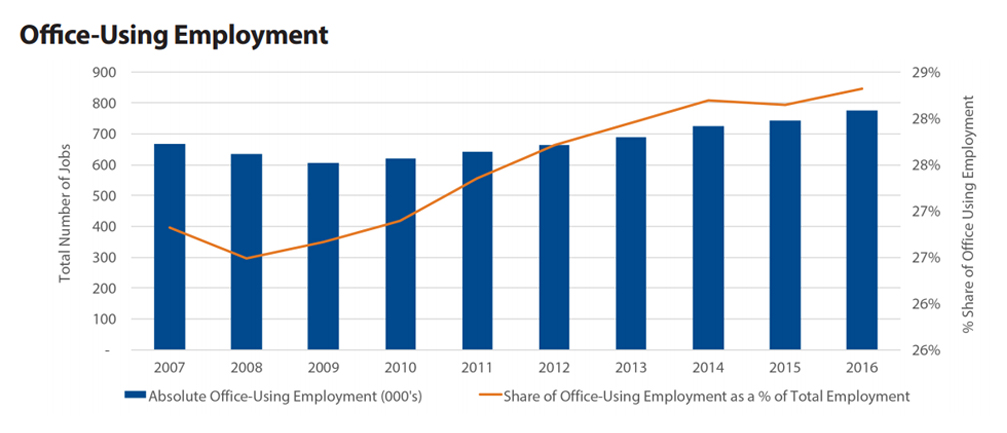Atlanta: City on the Upswing
A broad-based increase in jobs, an established 18-hour lifestyle and the expansion of the media and entertainment industry are contributing to the metro’s rapid development.
By Alex Girda
Sustained economic and employment growth have turned Atlanta into a regional powerhouse. Contributing to the metro’s rapid development is a broadbased increase in jobs, an established 18-hour lifestyle and prominence in media and entertainment. Also, the city has become a mainstay in the film industry, as several major entertainment companies have chosen to base their productions in Georgia.
Atlanta is one of the fastest-growing employment markets in the U.S. More than 81,000 jobs were added in the 12 months ending in May, nearly double the rate of national job growth. Professional and business services added 27,200 jobs during that time, a 5.6 percent increase year-over-year. Employment growth has fueled leasing activity, especially in submarkets such as Midtown and the Central Perimeter, but robust supply growth has led to increased vacancy rates in the central business district (CBD). Lease rates are growing moderately in both Class A and B properties.
Developers are ramping up construction significantly, with the focus on Class A space in trendy submarkets including Midtown and the Galleria. Roughly 3.4 million square feet of space will be added to the market in 2017, the largest amount of space to hit the market in years. The market’s inventory consists of 170 million square feet of space, mostly concentrated in Class A and A+ space.
Investor demand has also picked up, as nearly $3 billion of office assets were traded in the 12 months ending in July. About half the volume was concentrated in Midtown, Buckhead and the CBD. As Atlanta grows and its business base becomes more international, foreign capital is increasingly moving into the market. Even so, the buyer base remains largely composed of U.S. opportunity funds.








You must be logged in to post a comment.